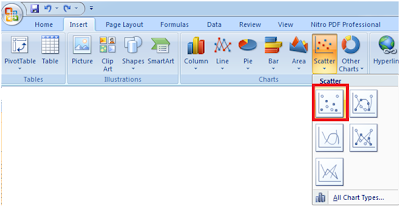What is R-Squared
As Investopedia states, it is a statistical
measure that represents the percentage of a fund or security's movements
that can be explained by movements in a benchmark index.
Thus it denotes the portion of a risk
associated with a security that is market related.
Beta and R-Squared
While Beta
measure how sensitive a security is to the Index movements, R-Squared denotes
the co-relation between Index movements and Security price movements. Thus,
Value of R-Squared equal to 1 denotes perfect correlation between Index and
Security Price movements.
Beta in
isolation is a useless number. It is essential to take a look at R-squared
along with beta. The R-squared value shows how reliable the beta number is.
Higher the R-Squared more reliable Beta is (Exceptions always possible).
Both Beta and
R-Squared are directly affected by choice of index made. Hence it is always advisable
to have a Broad based Index like S&P500 while calculating.
Jensen's alpha
Jensen's alpha is used to
determine the return of a security or portfolio of securities over
the theoretical expected return. Theoretical Return is calculated by models
like CAPM etc.
In capital
Asset Pricing Model (CAPM) the expected return on asset/investment is
calculated as,
Expected
Return = Riskfree Rate + BetaAsset (Equity Risk Premium)
To calculate
Jensen’s alpha one requires the following inputs:
- realized return (on the security/portfolio),
- market return,
- risk-free rate of return, and
- beta of the security/portfolio.
Jensen's alpha = Security or Portfolio
Return − [Risk Free Rate + Security or Portfolio Beta * (Market Return − Risk
Free Rate)]
Thus it can
clearly be seen that CAPM takes into account the relative risk of an investment/security
and calculate the Expected theoretical return while, Jensen’s Alpha calculates
returns over and above theoretical returns. Thus, Positive Jensen’s Alpha means
performance of Security above expectations while, negative Jensen’s Alpha means
below expectations performance by the security.
Jensen’s Alpha
is derived from purely historical numbers and hence essentially it should not
affect the future investment decision. Still it is widely used to judge performance
of Mutual Funds.
Example
Statistics Summary
|
Tata Power
|
NTPC
|
Reliance Power
|
Adani Power
|
Power Grid Corp.
|
R Square
|
0.5866
|
0.4809
|
0.6987
|
0.0213
|
0.4197
|
Beta
|
1.1881
|
0.7145
|
1.4971
|
0.1251
|
0.6694
|
CAPM Estimated Returns
|
14.90%
|
10.82%
|
17.56%
|
5.76%
|
10.44%
|
Actual Returns over the Period in
consideration
|
917%
|
121%
|
-21%
|
3.99%
|
-32%
|
Period in Consideration for the Stock
(Years)*
|
10.33
|
6.58
|
3.00
|
1.83
|
3.5833
|
Annulised Returns
((1 + Rate of Return)1/N) - 1
|
25%
|
13%
|
-7%
|
2%
|
-10%
|
Jensen's
Alpha
|
10.27%
|
2.00%
|
-24.93%
|
-3.60%
|
-20.61%
|
*Refer Raw Data Sheet
|
Thus above example depicts the
fact that investment in Tata Power has yielded more returns that theoretical
estimations or say, expectations (of mine off course), historically.
Links:
1. Investopedia R-Squared Definition (http://www.investopedia.com/terms/r/r-squared.asp#axzz1cacIVWMK)









